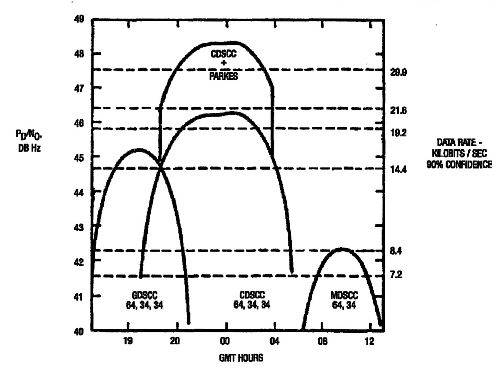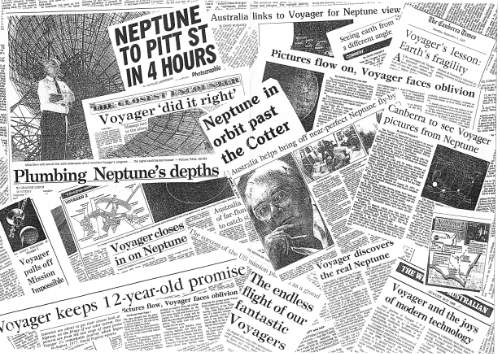24/25 January 1986
This Radio Science Data plot from JPL’s Frank Donivan, shows the variability of the received X Band signal as Voyager 2 was occulted by Uranus, and also by the planet’s (then recently discovered) ring system.
Scan: John Saxon.
Voyager support at Tidbinbilla
John Saxon writes:
24/25 January 1986 This Radio Science Data plot from JPL’s Frank Donivan, shows the variability of the received X Band signal as Voyager 2 was occulted by Uranus, and also by the planet’s (then recently discovered) ring system. Scan: John Saxon. |
 |
 |
See Also: Photos of (part of) the teams from Tidbinbilla at Parkes during the Voyager 2 Uranus and Neptune encounters. Hamish Lindsay’s Voyager essay in the Honeysuckle section. |